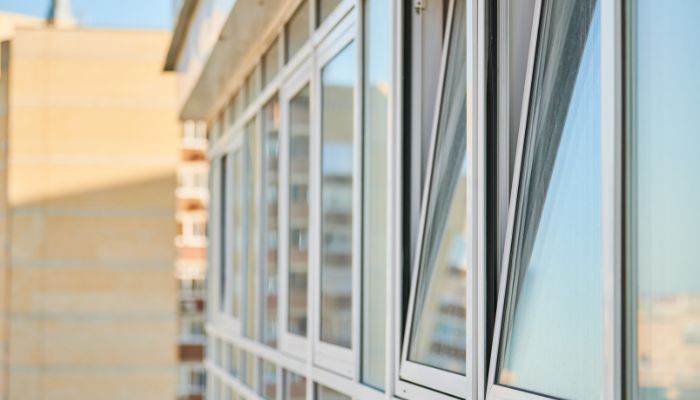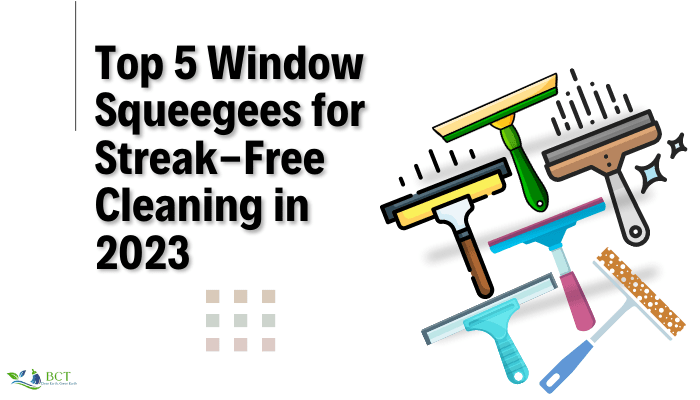Are you tired of buying expensive commercial window-washing solutions that never seem to deliver the results you want? Luckily, there’s a solution – make your own homemade window-washing solution for your squeegee! Not only is it effective, but it’s also affordable and easy to make.
Our Ingredients:
- Baking Soda
- White Vinegar or Lemon Juice
- Hot Water
- Essential Oil (optional)
- Spray Bottle
- Squeegee
Step 1: Fill a spray bottle with hot water and add 2 tablespoons of baking soda. Turn your windows to the inside and spray the solution onto the window from a few inches away. Work your way up and down the window with a squeegee. Wipe off any debris that is on the glass with a clean cloth.
Step 2: If using lemon juice, scrubbing bubbles, or essential oil, mix them into ¼ cup of hot water in a bowl and add it to the spray bottle. Turn your windows to the inside and spray solution onto the window from a few inches away. Work your way up and down the window with a squeegee. Wipe off any dirt or debris that is on the glass with a clean microfiber cloth.
Step 3: If you notice streaks or smears on your windows after cleaning, you can use a pre-made cleaner or mix 1 part white vinegar with 9 parts water in another bowl. Dip a sponge into the solution and scrub gently onto areas where there are streaks or smears. Rinse out the sponge and rinse the entire surface of the window pane.
Hopefully, these tricks will help you a lot to keep your window fresh with no cost & hiring someone to do this. Also, this simple trick is known as a homemade window washing solution for a squeegee.
What the Ingredients Do:
Baking Soda:
Baking soda is a natural deodorizer and cleanser. It breaks down the chemical compounds that cause smells and stains. It is safe for both indoor and outdoor use.
Lemon Juice:
Lemons are a natural antibacterial agent. They also have anti-rust properties, which help clean the window glass. It also has antibacterial properties that help control bacteria growth.
Water:
Water is needed to create the bubbles that clean the window. It also has a natural hydrating agent that helps keep your window clean. Besides, you can make deionized water for your window for the best result.
Squeegee:
A squeegee makes it easy to remove any dirt or debris from your window’s surface.
Note: Don’t have any squeegee in your home? Don’t worry you can make a squeegee for your own with some household items.
White Vinegar:
Vinegar for window washing recipes is a common practice. White vinegar is a natural cleaner and disinfectant. It helps remove smells and stains, and it’s also known to be eco-friendly.
Essential Oil:
Some window cleaners include essential oils to give the windows a pleasant smell. Some oils, like lavender, help protect the window from microbial growth.
Safety Precautions for Mixing Homemade Glass Cleaner
When you make your own glass cleaner, always use safe ingredients and follow the instructions carefully. Never use a window cleaner that is hot or abrasive. The most important thing is never to mix vinegar with chlorine bleach cause it will create toxic chlorine gas. Chlorine gas can be dangerous if it’s inhaled.
Advantages & Disadvantages of a Squeegee
Our experts have discovered some advantages and disadvantages of squeegee use. Maybe these will help you to make a perfect decision for choosing cleaning tools.
Advantages:
- Improved cleaning: A squeegee can help you more effectively remove dirt, grime, and liquids from a surface.
- Reduced streaks: Squeegees can make surfaces streak-free, so you can achieve a cleaner, more polished look.
- Longer-lasting cleaning: Because a squeegee removes more dirt and grime from a surface than other cleaning tools, the surface will stay cleaner for longer.
- Multipurpose tool: Squeegees can be used on a variety of surfaces, including windows, mirrors, shower doors, and countertops.
- Cost-effective: Squeegees are a relatively inexpensive cleaning tool and can save you money on paper towels or other cleaning supplies.
- Eco-friendly: Using a squeegee helps reduce waste by eliminating the need for disposable cleaning products like paper towels.
Disadvantages:
- Limited effectiveness on rough or porous surfaces: Squeegees work best on smooth, non-porous surfaces. They may not be as effective at removing dirt and grime from rough or porous surfaces, such as brick or concrete.
- May require additional cleaning tools: Depending on the type of dirt or grime you are trying to remove, you may need to use additional cleaning tools in conjunction with the squeegee to achieve the best results. Or you always need an extra cleaning solution while cleaning.
- May require some physical effort: Squeegee is just a cleaning tool, not a machine so using a squeegee can require some physical effort, especially if you are working on a large surface or if the dirt or grime is particularly stubborn. But if you’re already experienced in using maybe that won’t be harder as mentioned above.
- May not reach tight spaces: Squeegees are not foldable tools. As they are designed to clean flat surfaces, so they may not be effective at cleaning tight corners or spaces.
- May leave water spots: If you do not dry the surface thoroughly after using a squeegee, you may be left with water spots. Although it’s rarely seen if you’re using your squeegee properly.
FAQ
Is natural window washing solution good or chemical products?
Natural things protect nature from any kind of damage. It is very clear that a natural window washing solution is much better than cleaning with chemical products.
Can I use tap water to make my homemade window cleaner?
Yes, you can use tap water to create your cleaning solution, but if you have hard water, it may leave streaks on your windows. Using distilled or filtered water can help ensure a clearer finish.
How often should I clean my windows?
The frequency of window cleaning depends on various factors such as your location, the weather conditions, and the level of pollution in your area. It’s generally recommended to clean your windows at least twice a year, but it’s best to clean them more frequently if you live in a particularly dusty or polluted area.
Can I use my homemade solution on tinted windows?
If you have tinted windows, it’s best to avoid using any solution that contains ammonia or vinegar, as they can damage the tinting. Instead, consider using a solution that contains gentle and non-toxic ingredients such as dish soap, alcohol, or cornstarch.
Can I use a different cleaning tool besides a squeegee?
While squeegees are an excellent tool for cleaning windows, you can also use other cleaning tools such as microfiber cloths or a spray bottle, and a soft-bristled brush. The key is to choose a tool that is gentle on your windows and won’t scratch the surface.
How do I store my homemade cleaning solution?
You can store your cleaning solution in a labeled, airtight container in a cool, dry place for up to six months. Be sure to shake the container before using the solution, as some ingredients may settle at the bottom over time.
Final Thoughts
Creating your own DIY window cleaning solution is a wonderful way to save money and protect the environment. With the right approach as mentioned above, making your own window cleaner will be an easy and enjoyable task that yields fantastic results. So, if you’re looking for a cost-effective and eco-friendly way to clean your windows, making your own solution is definitely worth considering.


